Feelings Chart
The quality of your life depends a lot on your emotions. They influence every aspect of our lives, from our relationships to our ability to make decisions. Your emotions can create a state of happiness and peace or sadness and fear. That doesn’t mean you should ignore your negative thoughts and feelings. We feel them for a reason. Our brains were programmed to feel fear to ensure our survival. Many years ago if a person encountered a lion the fear helped keep him alive. The world is much safer now, but negative feelings such as fear or anger still protect us.
Recognizing and regulating our own emotions
We are often taught to push our feelings away, making it difficult to recognize and express how we feel. However, suppressing our emotions has serious consequences. Our feelings become magnified and distorted.
Free Printable Feelings Charts
A feelings chart is an excellent way to deal with your emotions. When you step back from your feelings you can think about them more clearly and ease their intensity. Writing them down is a great way to do this. Try using a feelings chart every day for a week. Afterward, take some time to reflect on what you’ve written. Analyze WHY you’re feeling that way. Write down how each of your emotions ended up going away. What helped you feel better? Maybe you went for a walk, called someone or spent time with someone you loved. When you keep a record of these things you will be better equipped to help yourself next time you feel that same negative emotion.
Permission to Feel
Custom Emotion Chart with Your Photos
Emotion Chart from A to Z
This emotion chart includes a list of feelings from a-to-z with feeling faces for each emotion. It is perfect for hanging it in a classroom or at home.
Daily Feelings Chart
Use this printable feeling chart to help your kids or students describe how they are feeling.
Printable List of Feelings
This “feelings list” can be printed and used by kids (and adults) to describe their feelings. Use this list of feelings on its own or together with a feelings chart/emotion chart from below.
The Five Universal Emotions
Paul Ekman, a psychologist and leading researcher on emotions, surveyed more than 100 scientists, to find the five Universal Emotions that all people have in common, known as the Atlas of Emotions. The following lists of feelings and emotions are based on these five Universal Emotions (enjoyment, fear, anger, sadness, and disgust).
Emotion Tracker
Use this emotion tracker to track your emotions daily for an entire month. Edit the text to add any emotions to track.
How do you feel today chart
This feeling faces chart can be used to help children describe their feelings using emotion words. Explain to the child that it is OK to experience various emotions throughout the day. They can use as many emotions as they like. They can either use a word from the suggested list or use their own word. If they don’t want to write an emotion, then they can draw a feeling face.
Mark how you feel today on your feelings chart.
The following charts have a section to describe the child’s mood in the morning, afternoon, and evening. It will help you discuss or analyze triggers that change their mood throughout the day.
Emotion Journal
Control
This worksheet distinguishes between things you have control over and things you don’t have control over. It encourages you to focus more on the things you have control over and less on the things you don’t.
Editable Emotion Chart for Kids
This emotion faces chart is editable. You can edit the text, select any clipart and change the emoji faces.
Either divide the day into sections and relate to each section or have one line for each subject if the daily mood chart template is being used at school. Feel free to use it however it works for you.
If you are using this for toddlers or preschool then you can add images instead of the text. For example, if you want to discuss how the toddler felt during lunch you can add a photo of lunchtime. To add a photo, click on add photo and upload any photo. Drag it to any position and make it smaller or larger.
Reflection Chart
This chart can be used to:
- Analyze behavior
- Investigate the trigger that caused the behavior
- Encourage children to think of a better solution next time they experience a similar feeling.
Feelings Thermometer
This emotional thermometer will help kids express a range of feelings and scale of emotions. The emotions thermometer is a visual tool to help children understand the wide range of emotions from the blue calm zone to the red zone. It also helps children express emotions and understand the intensity of their emotions.
The emotion thermometer poster is a high-resolution file so you can print it for your classroom or child’s bedroom. If you want to make it more durable, then have it laminated.
This free feelings thermometer printable has different versions. You can either print it as is or you can print the blank PDF version which is typeable. You can type your own level of emotions if you prefer to use different emotions. You can also add coping strategies for the different emotional states.
This resource is perfect for those working on social skills, emotional regulation, and emotional awareness.
Choose the feelings thermometer PDF version if you want to edit the emotions (the blank versions have typeable fields)
Mood Meter
The mood meter was created by the psychologist James Russell in order to identify emotions and to reduce misinterpretation.
Anger Thermometer
See our anger thermometer (which shows the intensity of anger in each section of the thermometer)
FAQ
How can your emotions help you?
Every emotion has a function. For example, fear protects you from danger. Anger shows others that something bothers you. Happiness makes you feel good. Sadness is a sign that something isn’t right. It is very important to be connected to your emotions and to know how to recognize them and express them. Analyze where your emotion comes from to understand what you are feeling and what caused it. Emotions are messengers that we feel in our body. Listen to them and they will help you understand what you really need.
Firstly, explore and identify your emotions. An emotion chart can help a person identify their emotions.
Permit their expression. Emotions come and go. Just because you are feeling sad, it doesn’t mean that you will feel like that forever.
Then, understand why this emotion is coming up. Analyze the problem that provoked the emotion.
It is important to note that you are not your feelings! We often think of our emotions as part of our core being. We’re angry or happy or sad. However, your feelings are temporary. They come and pass. They are not a permanent feature of your inner being. You are not happy or sad all the time. Your negative emotions don’t make you an unhappy or bad person. Therefore, don’t obsess over them or feel guilty for having them. They are just feelings and they will pass.
Negative emotions serve a purpose and that is to tell us something is wrong. They help you understand what’s going on inside – a chance for self-reflection. They are often a red flag for an issue you need to address. For example, fear may be an indicator that something is potentially dangerous or simple that you are no longer in your comfort zone and you might need to challenge yourself.
Step back from your emotions and evaluate them critically from the outside. Where are they coming from and why?
What is a feeling face chart?
This is a chart with various faces. Each face shows a different emotion. The emotions are happy, sad, scared, angry, frustrated, etc. Some of the charts on this page have a description for each emotion, whereas others have a feeling face with a line to describe how you think each face is feeling. Encourage the children to describe each mood. We have a few printable feeling lists which will give kids’ ideas and help them match the relevant feeling to the face.
Where can you use these feeling charts?
Parents, teachers, or therapists can use these charts at home, school, kindergarten, therapy centers, or clinics. There is also a feelings chart for adults which can be used by teenagers and adults. See Feeling Chart for Kindergarteners
Why use mood charts?
Some children find it difficult to express themselves or describe how they are feeling. Mood charts can be used to get these kids to open up and share before an issue blows up. They also help discuss various emotions and possible reactions or triggers. During discussions, you can learn a lot about the children and understand what they are going through.
How to use mood charts?
Whereas an emotion results from a specific event or situation, a mood is a feeling that does not directly result from any specific reason or cause.
There are many different ways to use the charts, depending on what you are trying to achieve. One effective method is to ask the children to describe what they think the face is feeling. If they have trouble defining emotions, you can use the printable feeling list on this page. Once they have described this feeling, you can discuss what could have made them feel this way. This will help you understand how various triggers cause kids to behave in a particular manner. For example, if a child has anger management issues, you could discuss alternative reactions to these different feelings.
Why is it important to define your feelings?
According to Salovey & Mayer, J. D. (1990) in “Emotional intelligence. Imagination, cognition and personality”, the ability to identify your emotions is a skill that is related to emotional intelligence. Some people are more capable when it comes to pinpointing and describing their emotions than others.
According to Dr. Gloria Willcox (Positive Psychology), people high in differentiation are able to express more detailed emotional experiences and use different adjectives to represent their experiences. They are better able to distinguish the intensity of emotions and use a greater emotion vocabulary. In contrast, people low in differentiation use only a few general emotional states and often struggle to communicate their feelings.
Evidence suggests that helping people to expand their vocabulary to describe feelings and emotions can help them regulate their emotions more effectively (source: Kircanski, Lieberman, M.D., Craske, M.G., “Feelings into words: contributions of language to exposure therapy. Psychological Science”).
According to Sage Journals, when people can distinguish between different emotions they are less likely to resort to binge drinking, aggression, and self-injurious behavior; show less reactivity to rejection, and experience less severe anxiety and depressive disorders upon experiencing intense distress.
When you don’t address and process emotions, they can become trapped inside of us and continue to negatively impact our thoughts, feelings, and health without our awareness. One of the ways to release these trapped emotions is with the Emotion Code Chart.

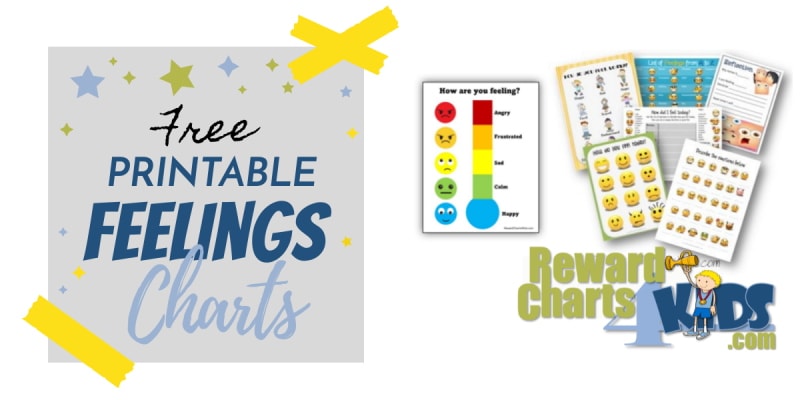
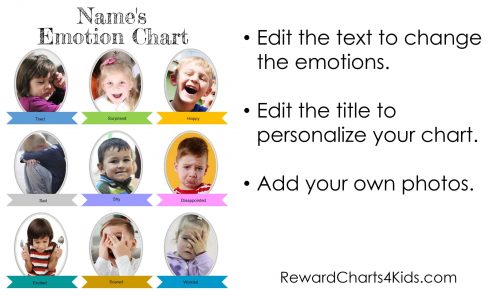
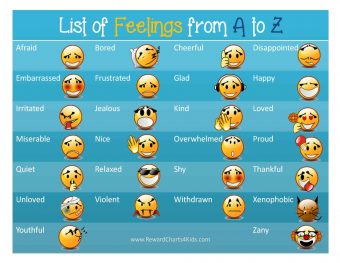
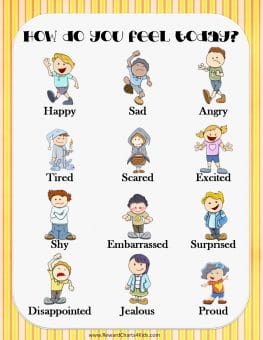
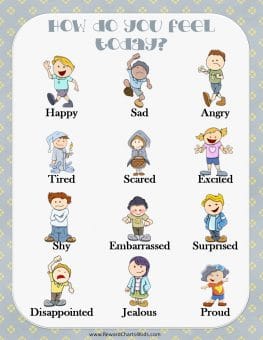
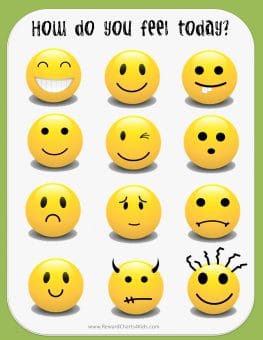
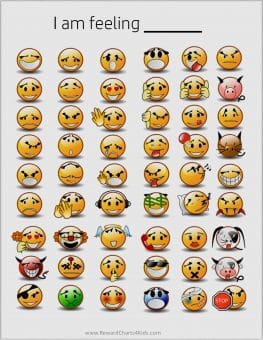
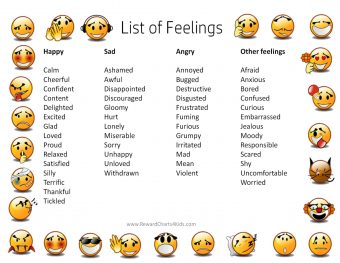
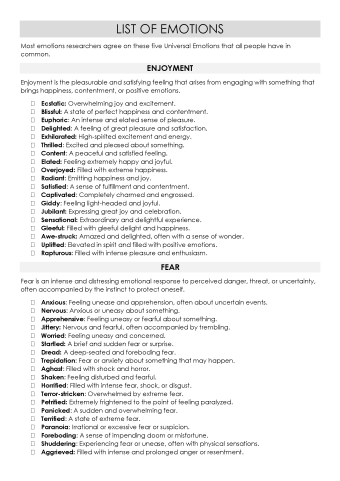
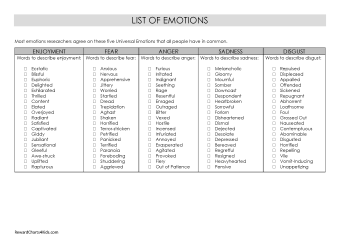
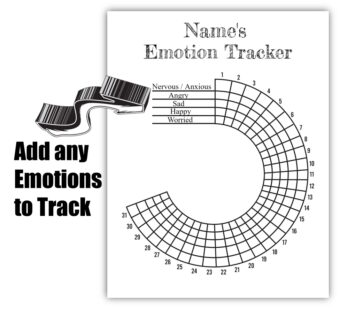
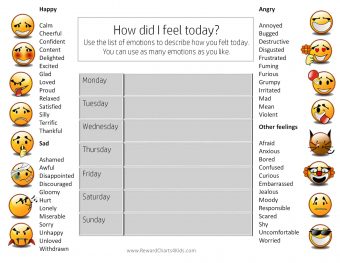
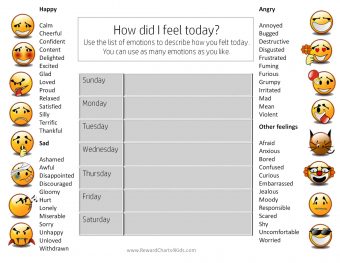
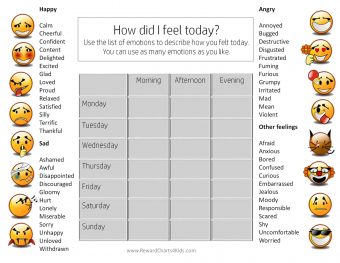
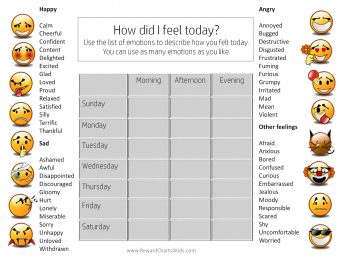
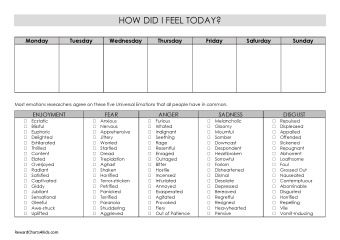
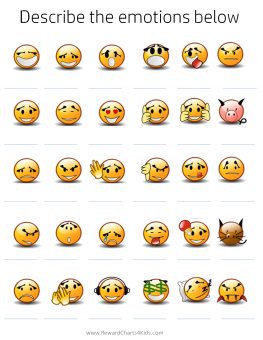
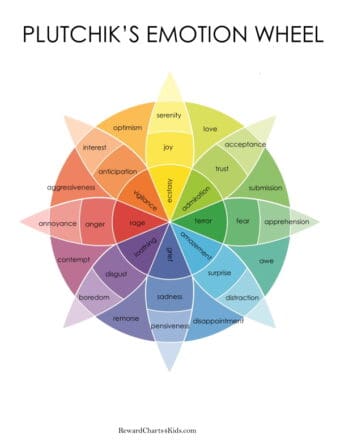
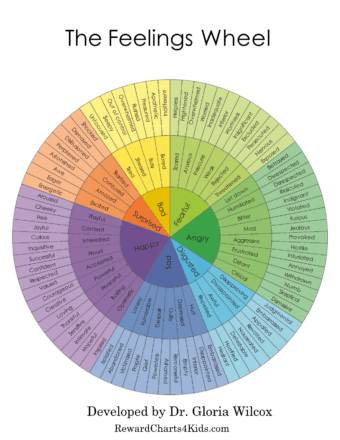
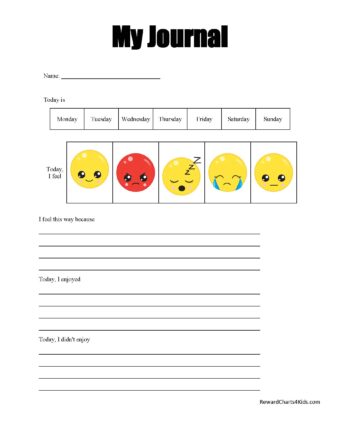
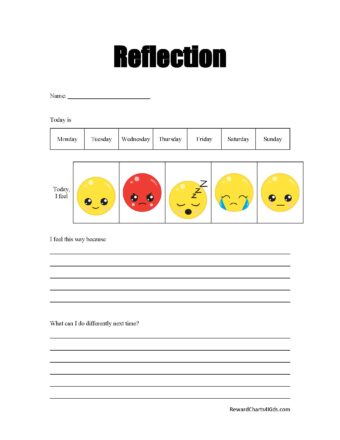
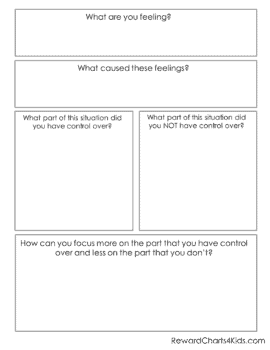
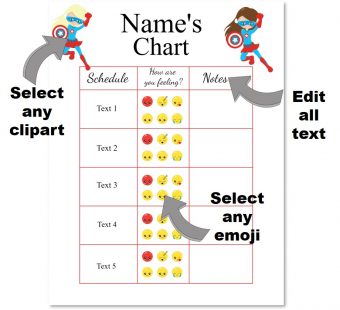
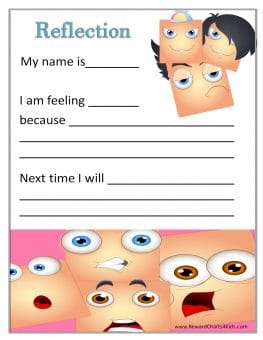
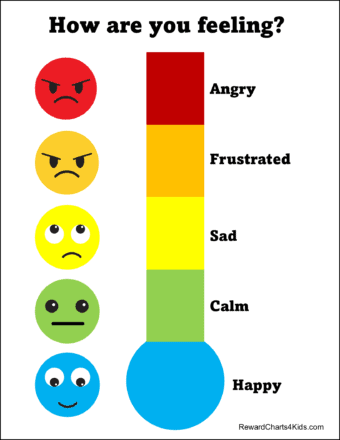
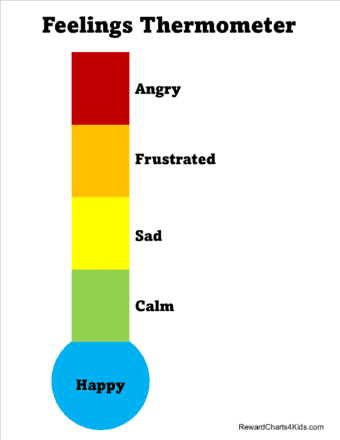
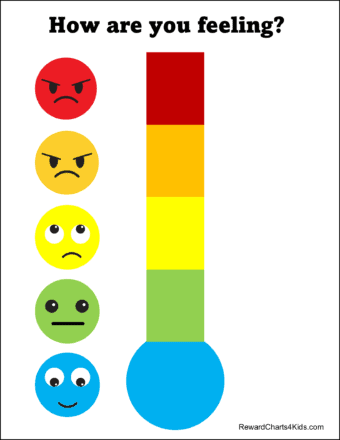
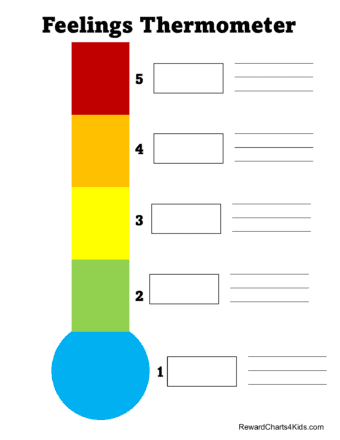
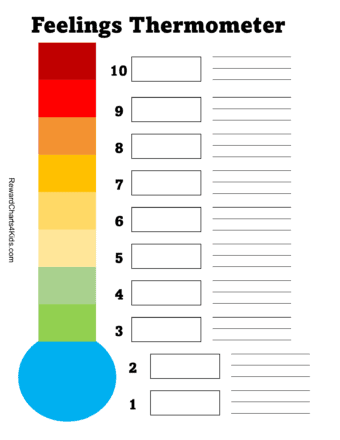
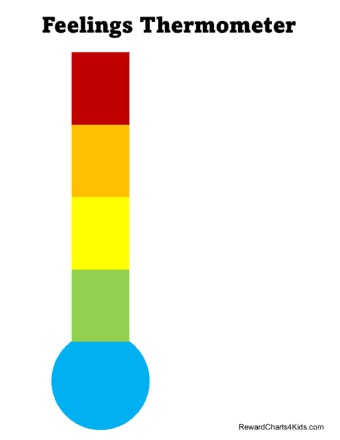
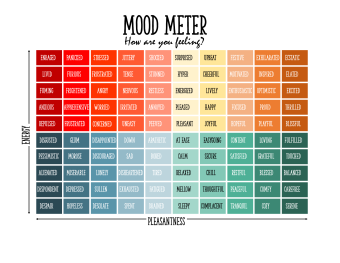
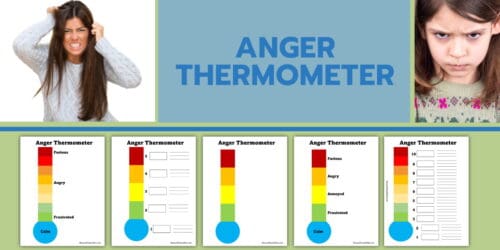
Thank You,
Your lists were very helpful for my fourteen yr old daughter and I, simple and easy to print out. Feeling better already. thanks again.
Thank you so much! These will be great for my girl scout troop as we learn to respect ourselves and others.
Thank you so much. I love the emoticons, and will be using this to assist my 4 year old in being able to recognise and use words for different emotions.
Stunning, bright and interactive charts perfect for children to identify with.
Many thanks